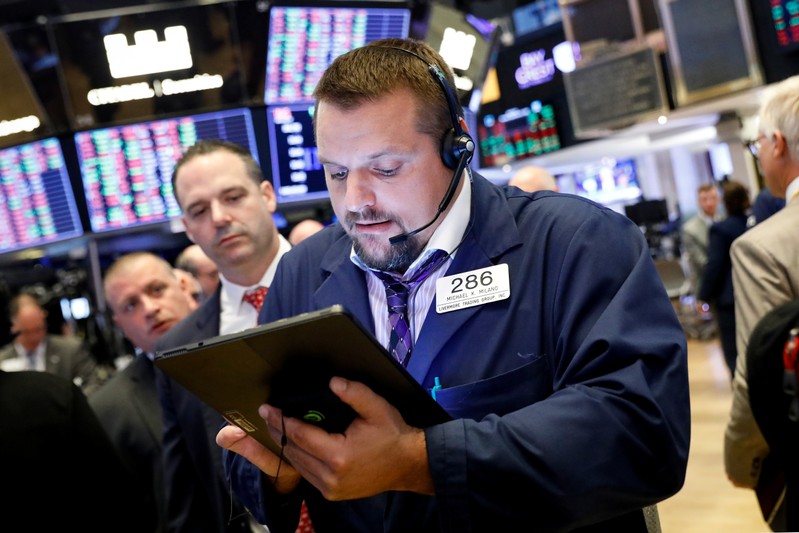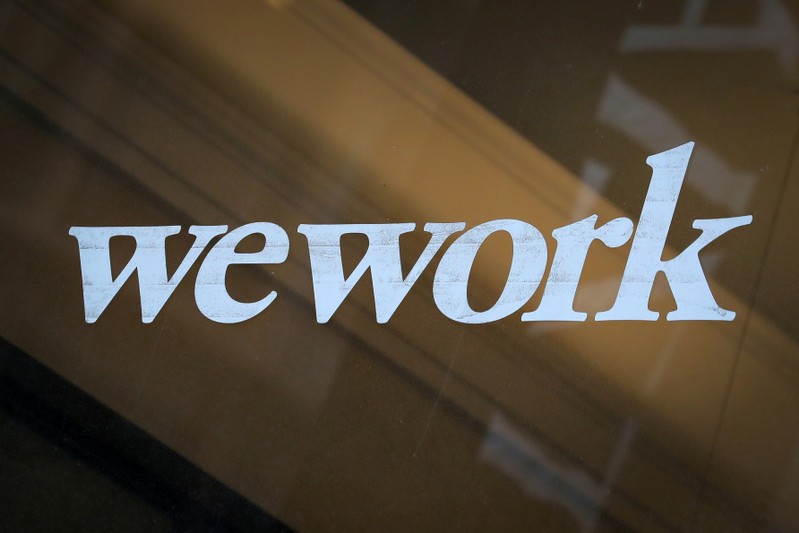
FILE PHOTO: Traders work on the floor at the New York Stock Exchange (NYSE) in New York, U.S., September 23, 2019. REUTERS/Brendan McDermid
September 27, 2019
By Caroline Valetkevitch
NEW YORK (Reuters) – U.S. stocks fell on Friday after reports that the Trump administration was considering delisting Chinese companies from U.S. stock exchanges, raising worries about a further escalation in the U.S.-China trade war.
The move would be part of a broader effort to limit U.S. investment in Chinese companies, sources told Reuters.
High-level trade talks between Washington and Beijing are scheduled for Oct. 10-11, before the start of the U.S. third-quarter earnings season.
“If our policies spark a major sell-off in Shanghai where that creates problems for China, that could negatively impact the trade negotiations, which are supposed to start on Oct. 10. That is where the U.S.-based fear would come from,” said Michael O’Rourke, chief market strategist at JonesTrading in Greenwich, Connecticut.
The tariff-sensitive Philadelphia semiconductor index <.SOX> extended its decline after the reports and ended down 2.4% on the day. The index was already under pressure from Micron Technology Inc’s <MU.O>, which tumbled after it forecast a disappointing first-quarter profit.
The S&P technology index <.SPLRCT> dropped 1.3%. U.S.-listed shares of Alibaba Group Holding Ltd <BABA.N>, Baidu Inc <BIDU.O> and JD.com Inc <JD.O> all slid.
Adding to the negative momentum in afternoon trade, the S&P 500 index briefly fell below its 50-day moving average.
The Dow Jones Industrial Average <.DJI> fell 70.87 points, or 0.26%, to 26,820.25, the S&P 500 <.SPX> lost 15.83 points, or 0.53%, to 2,961.79 and the Nasdaq Composite <.IXIC> dropped 91.03 points, or 1.13%, to 7,939.63.
All three indexes ended lower for the week as well, with the S&P 500 and Nasdaq registering their biggest weekly percentage drops since August. The Cboe volatility index <.VIX> ended at a three-week high.
Shares of Wells Fargo & Co <WFC.N> rose 3.8% and the stock was the top gainer in the S&P 500 after the lender named banking veteran Charles Scharf as chief executive officer.
Data early in the day showed U.S. consumer spending barely rose in August, suggesting that the economy’s main growth engine was slowing after accelerating sharply in the second quarter.
Declining issues outnumbered advancing ones on the NYSE by a 1.38-to-1 ratio; on Nasdaq, a 1.94-to-1 ratio favored decliners.
The S&P 500 posted 11 new 52-week highs and 6 new lows; the Nasdaq Composite recorded 29 new highs and 118 new lows.
Volume on U.S. exchanges was 6.68 billion shares, compared to the 7.2 billion average for the full session over the last 20 trading days.
(Additional reporting by Sinead Carew in New York and Ambar Warrick and Medha Singh in Bengaluru; Editing by Shounak Dasgupta, Chizu Nomiyama and Sonya Hepinstall)

